
Citrus aphids
Date: 2022 Author: Jianhua Mo
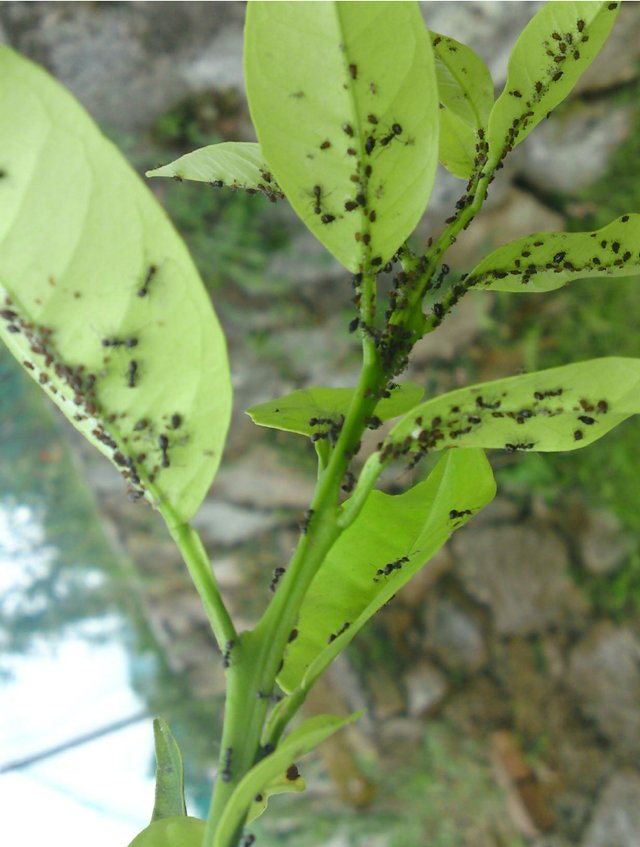
Species
Several species of aphids are found on citrus including:
- black citrus aphids (Toxoptera aurantii and Toxoptera citricida, note, the latter is sometimes called brown citrus aphid; Figure 2 and 3)
- melon aphid (Aphis gossypii; Figure 4)
- spiraea aphid (Aphis spiraecola; Figure 5 and 6).

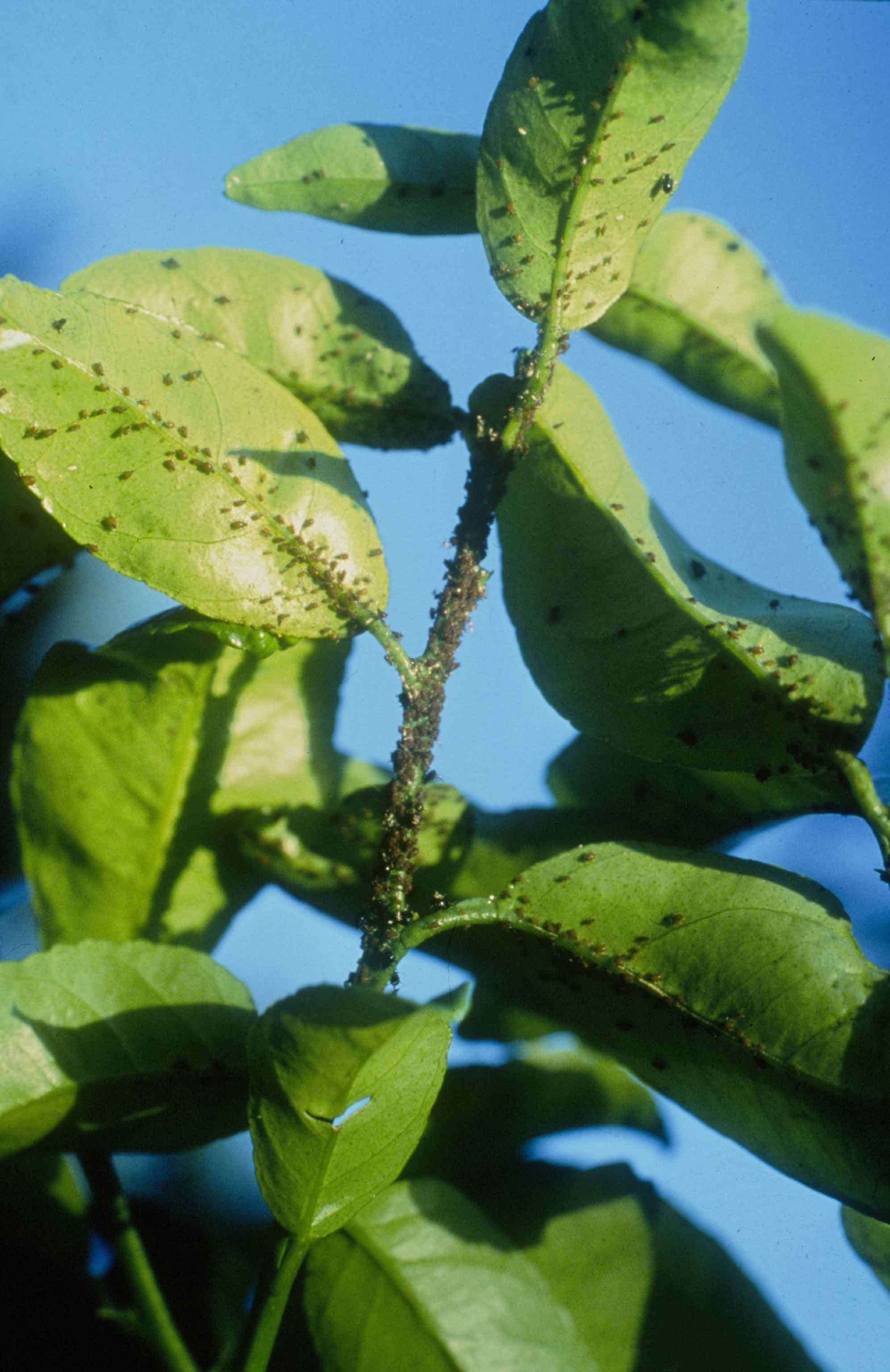
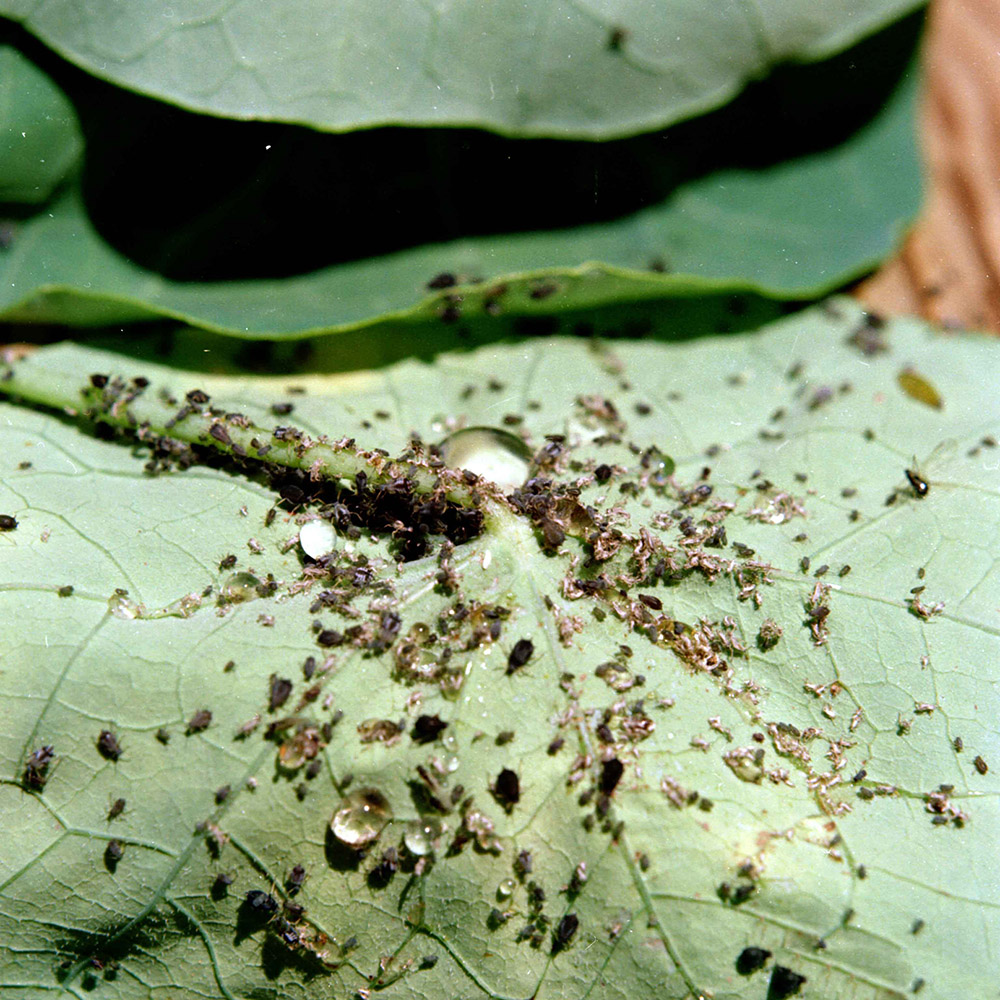
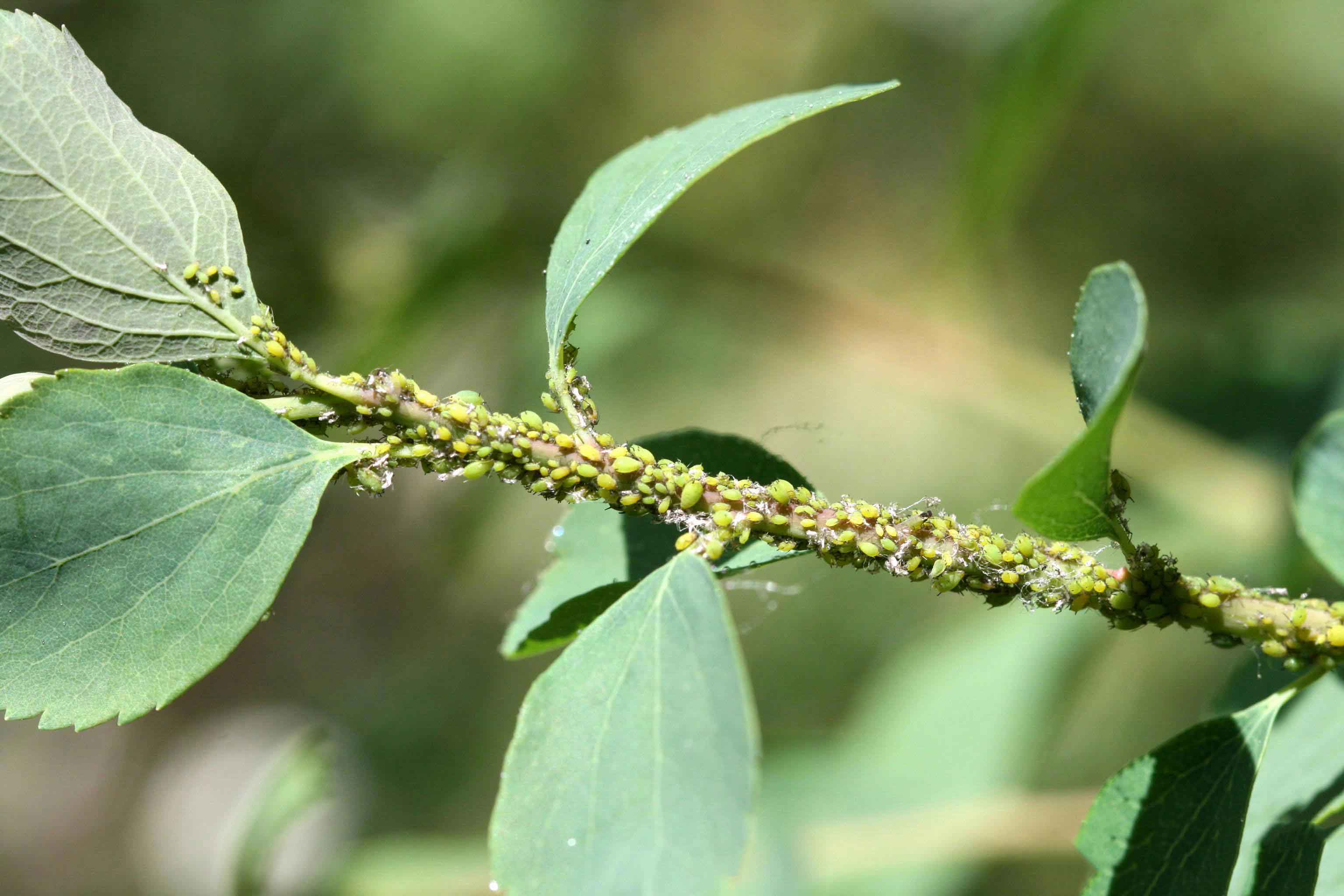
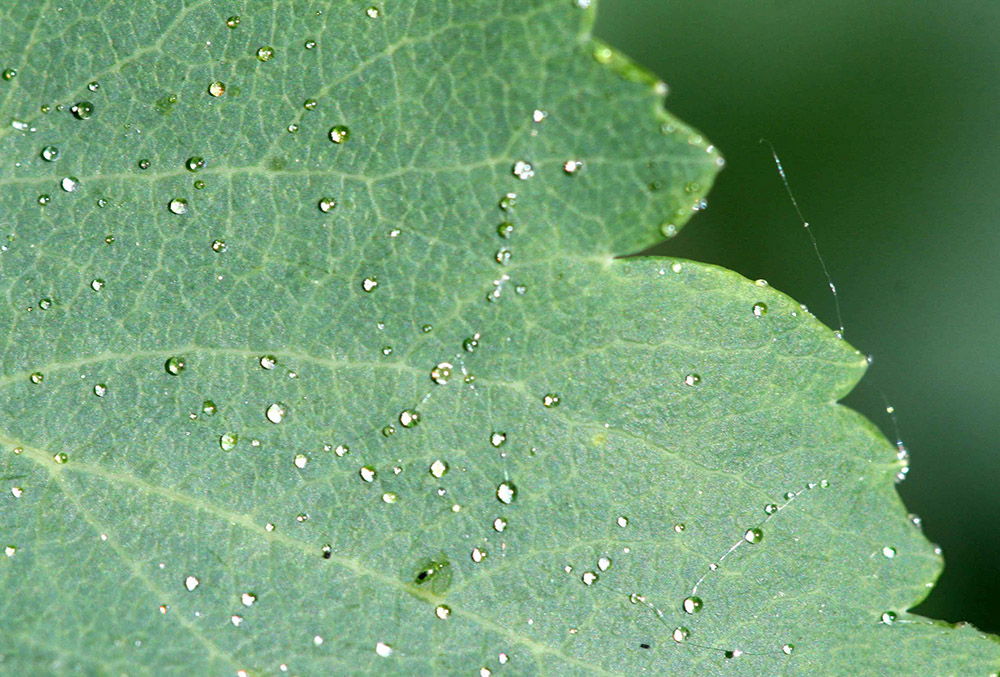
Description
Aphids are small (about 2 mm long), soft-bodied insects with characteristic tubular extensions to the abdomen. Adults can be winged or unwinged. Aphids have complex life cycles; when conditions are good, the females can reproduce asexually, then during winter, they can reproduce sexually (Figure 7). Aphids can build up large populations quickly. However, in environments undisrupted by pesticide use, aphids are normally kept at low levels by a suite of beneficial insects.
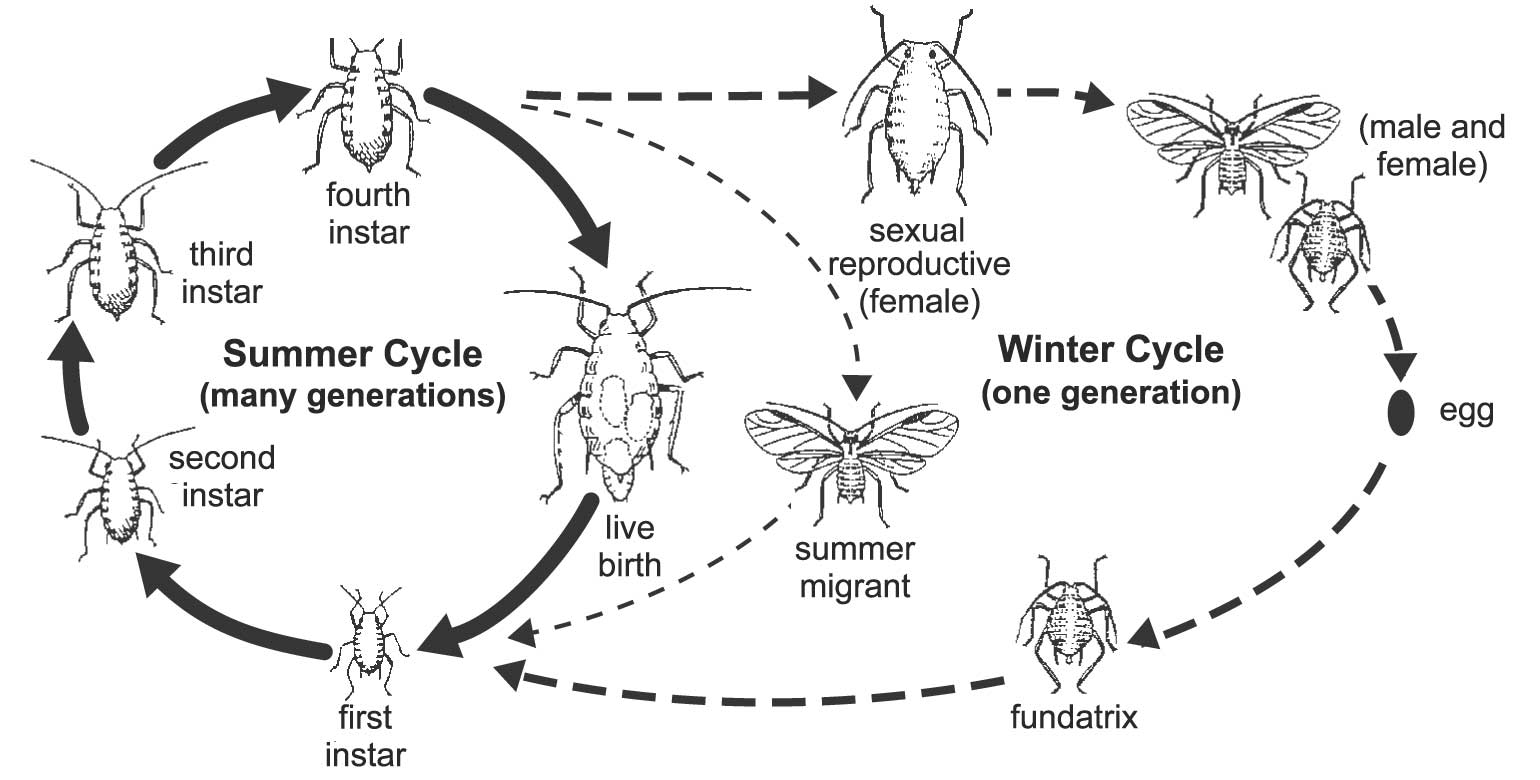
Damage
Aphids feed on plant sap using their sucking mouthparts, distorting shoots and transmitting plant viruses. They also produce honeydew, which encourages sooty mould growth.
Monitoring
Check young shoots in early September and late October for spring flush, and February to April for summer–autumn flush. Examine 5 to 10 young leaves from each shoot for aphids, honeydew and sooty mould.
Natural predators
- Parasitic wasps: Aphidius spp. (Figure 8 and 9) and Aphelinus spp. (Figures 10–12)
- Predatory lady beetles: Coccinella transversalis (Figure 13), or the transverse lady beetle, is native to Australia.
- Lacewings (Figures 14–18)
- Syrphid flies (Simosyrphus grandicornis; Figures 19 and 20) are an Australasian species of hoverfly.
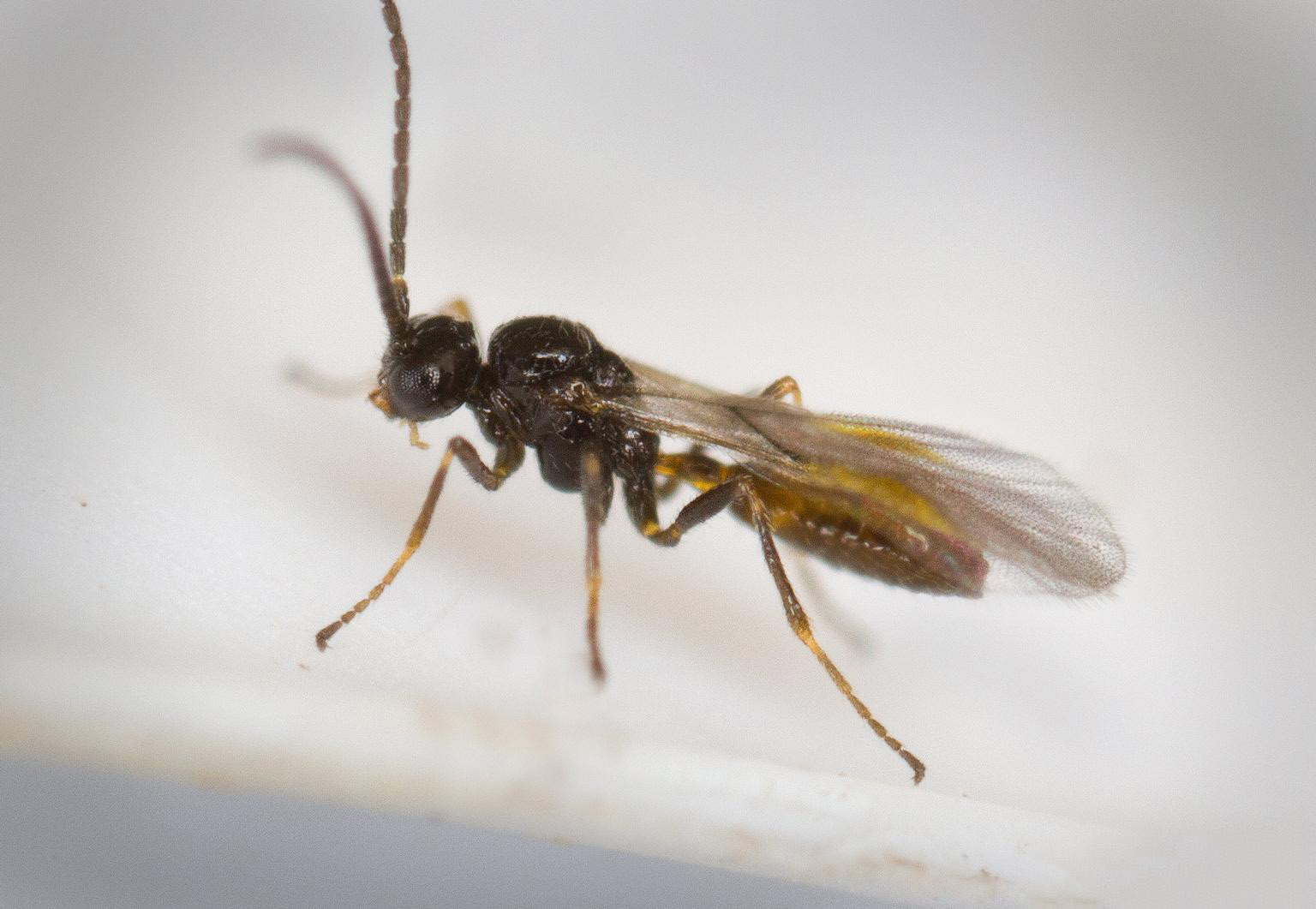
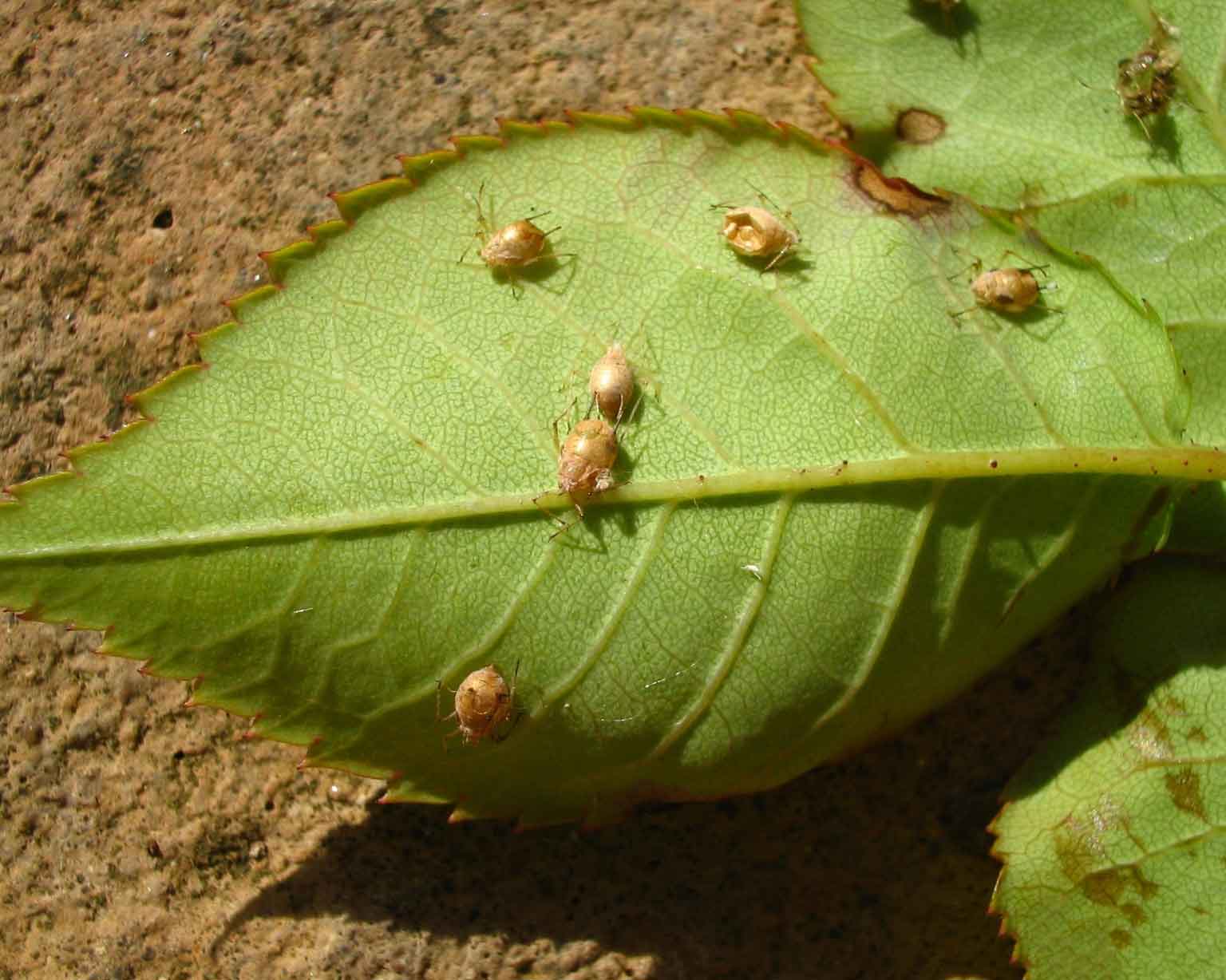
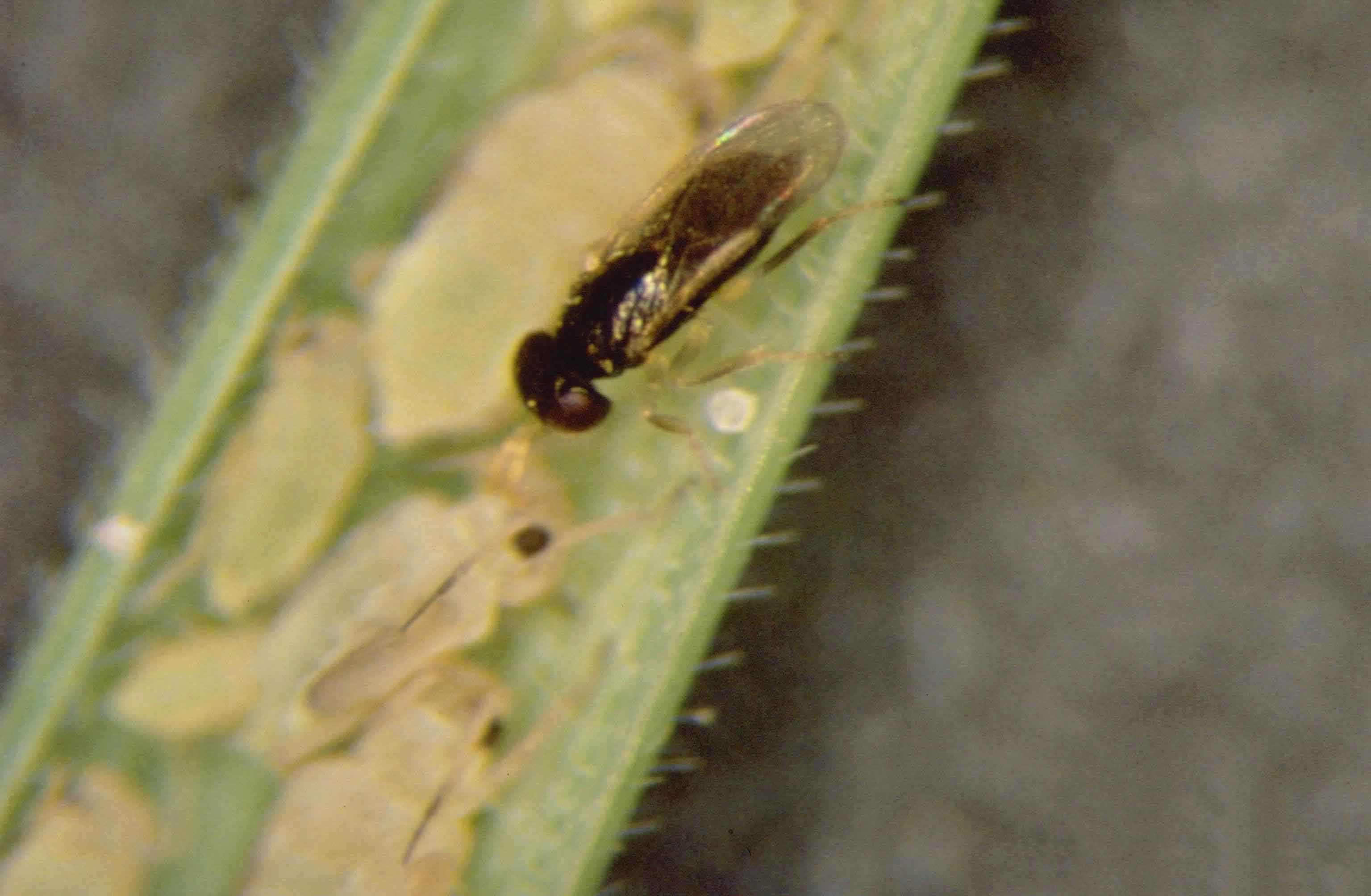
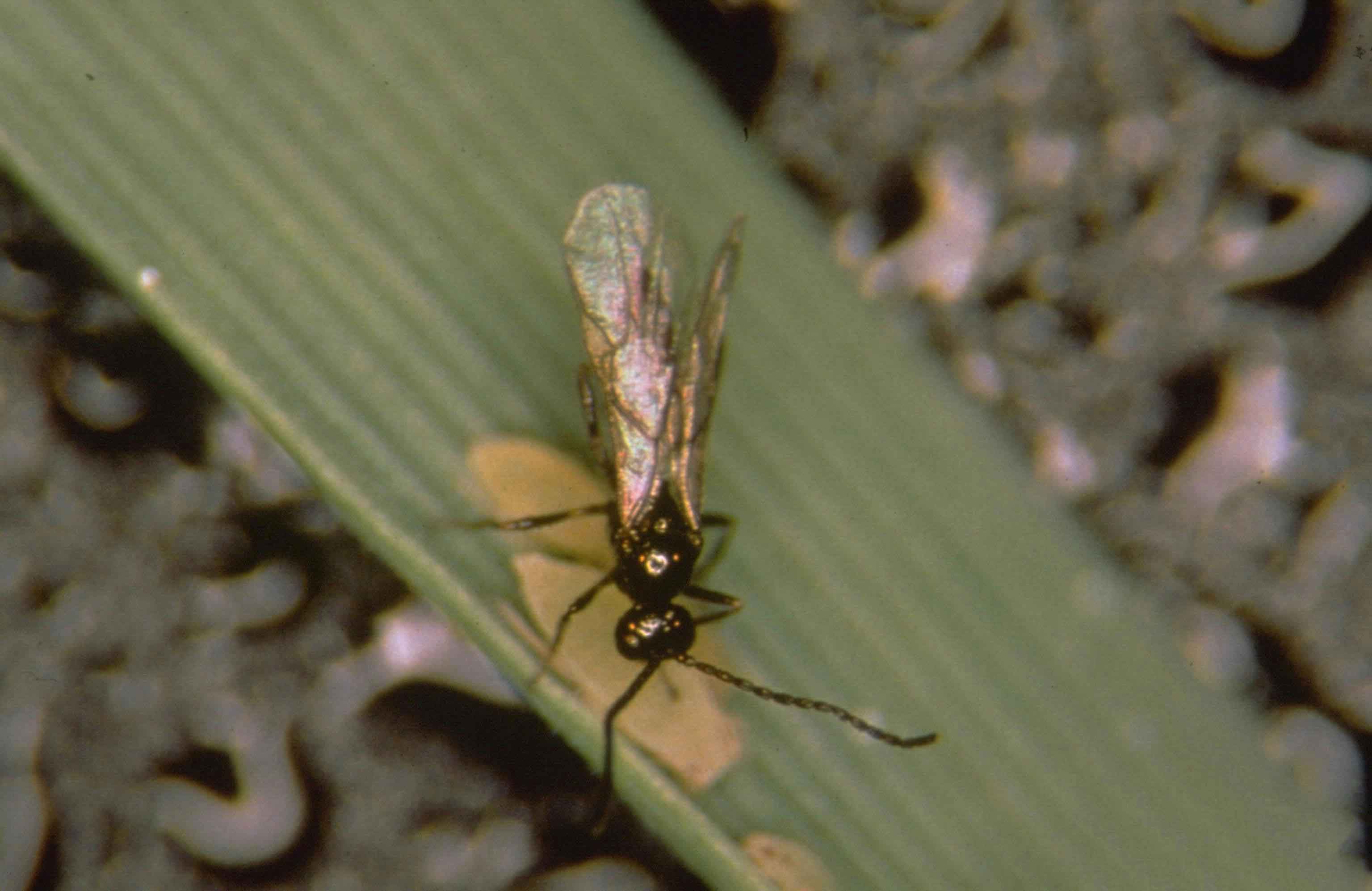
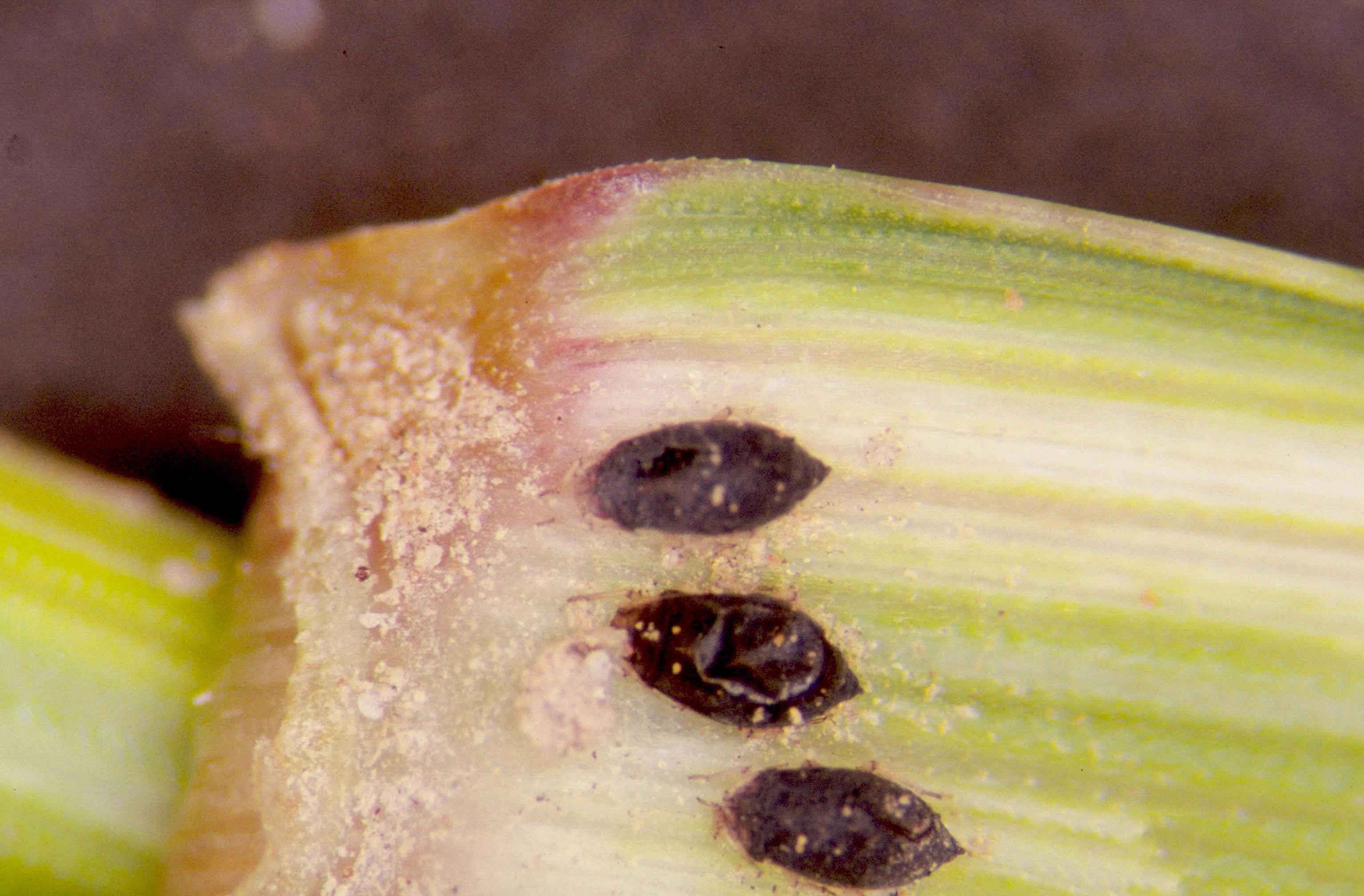
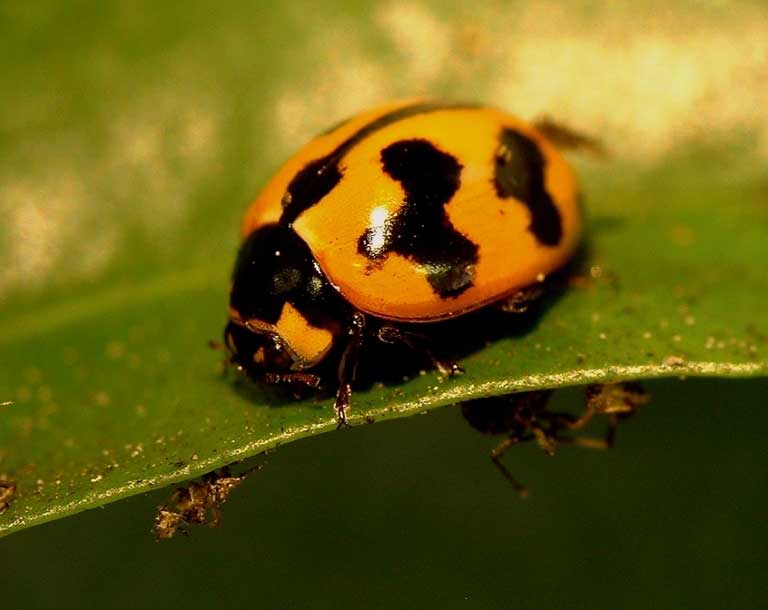
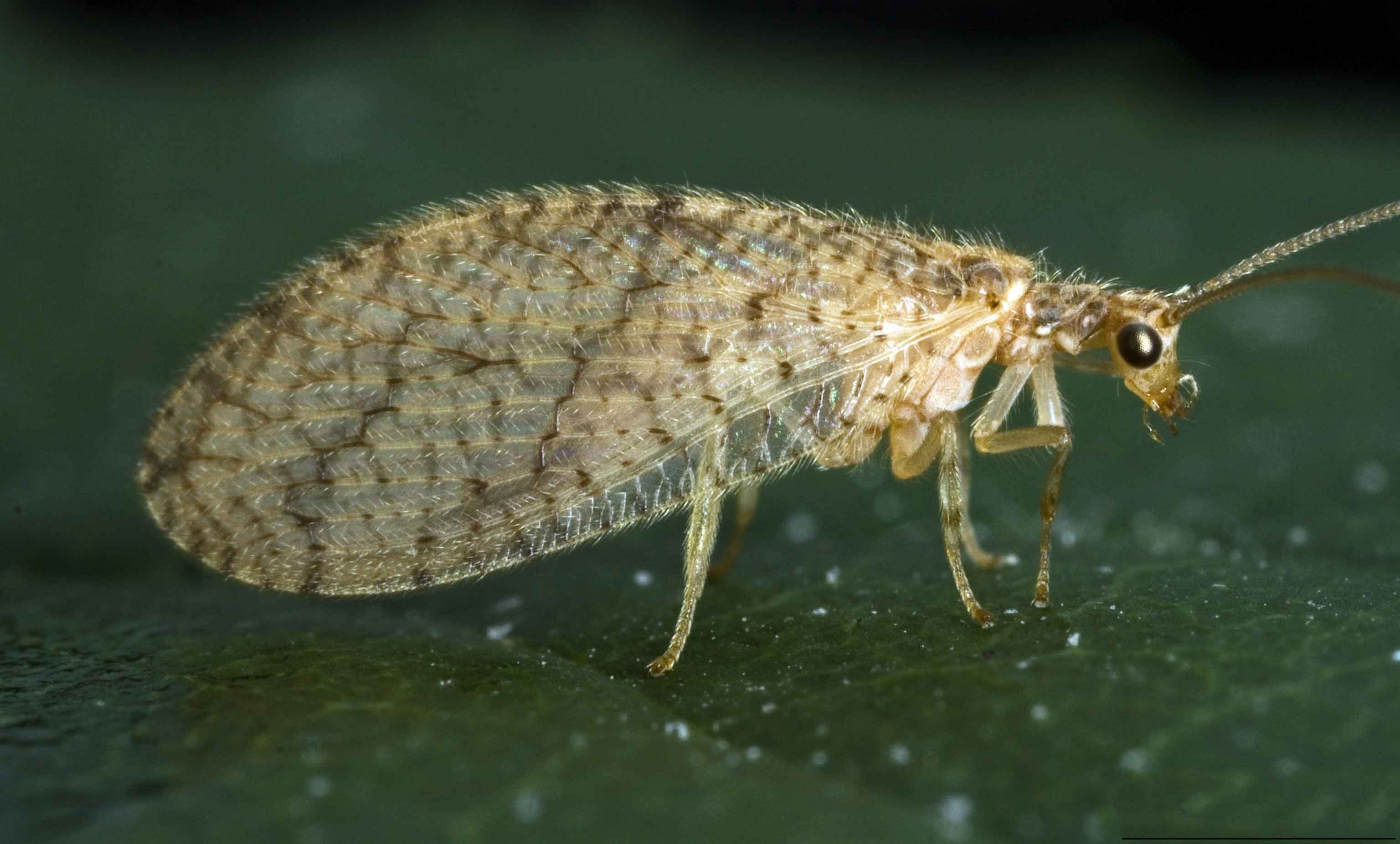
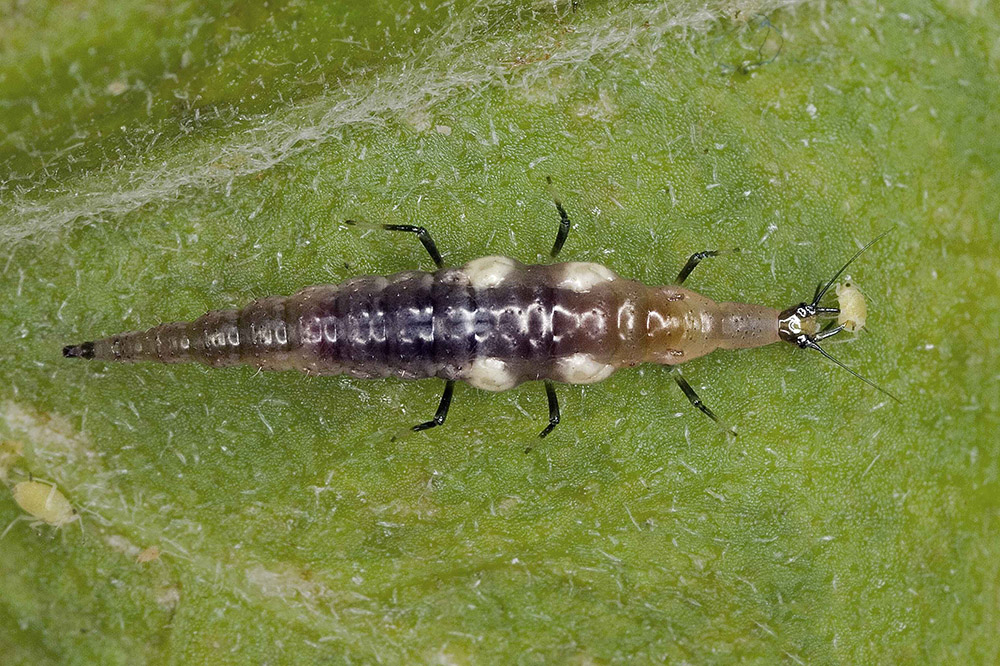
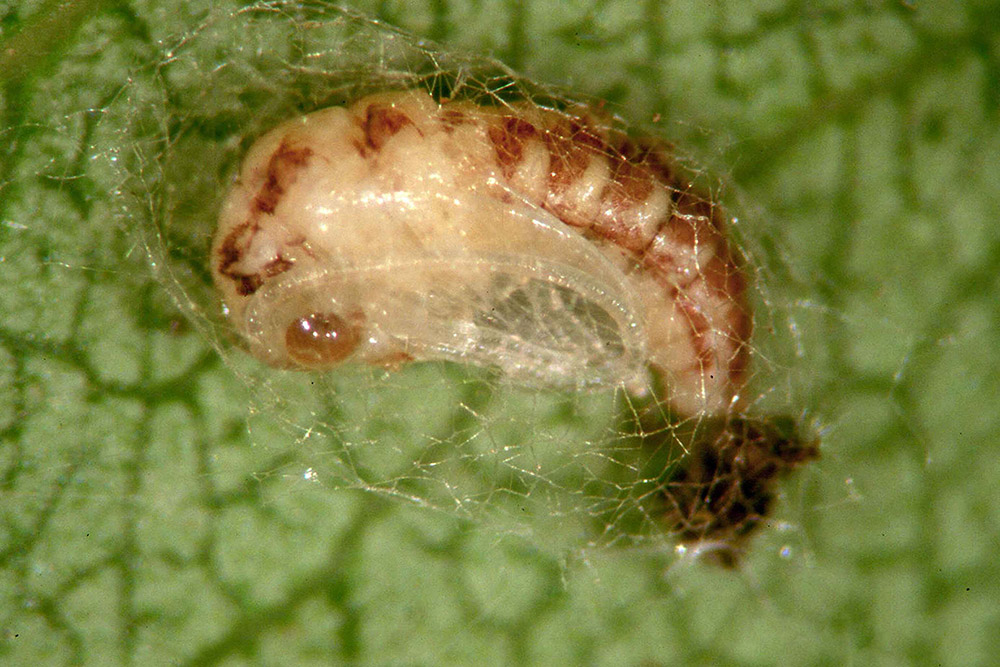
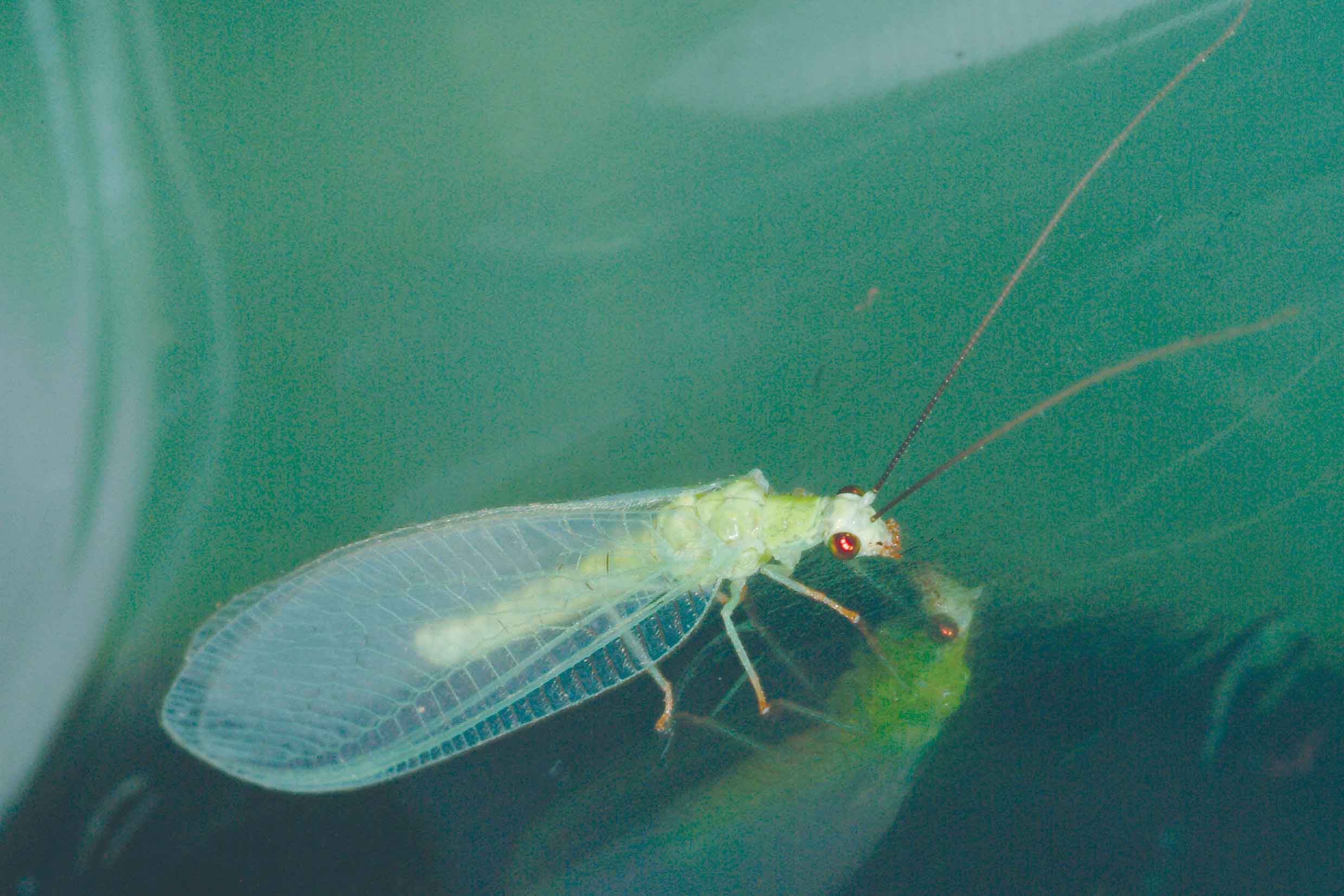
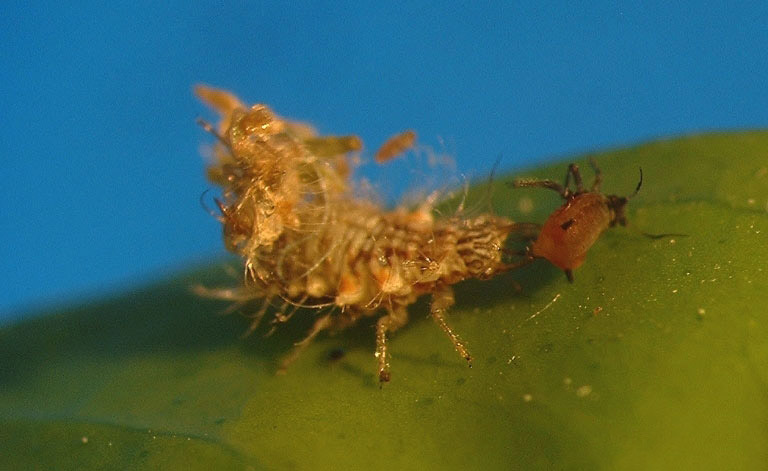
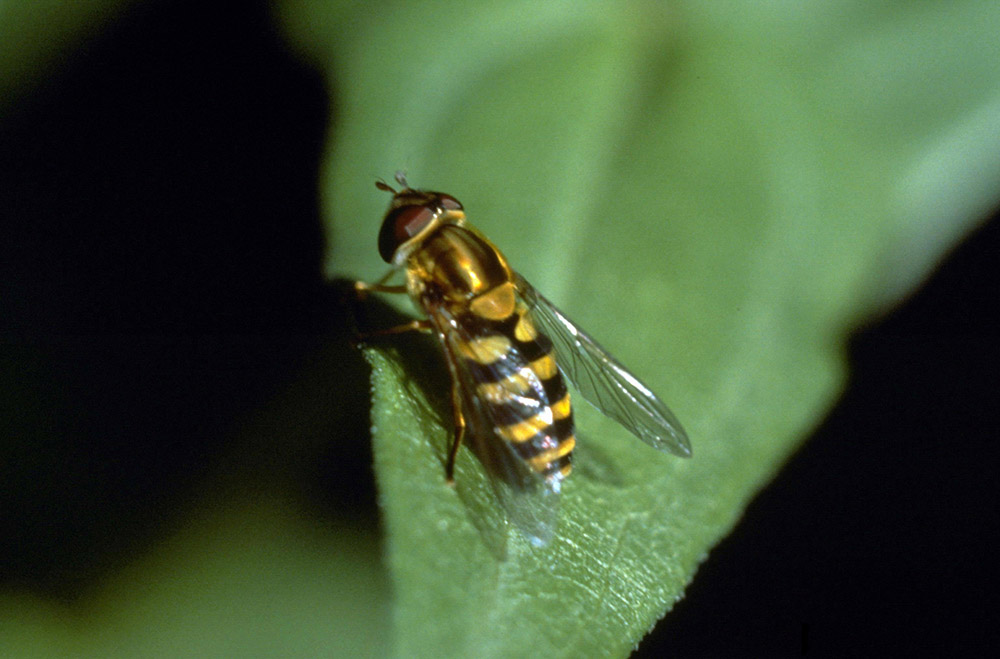
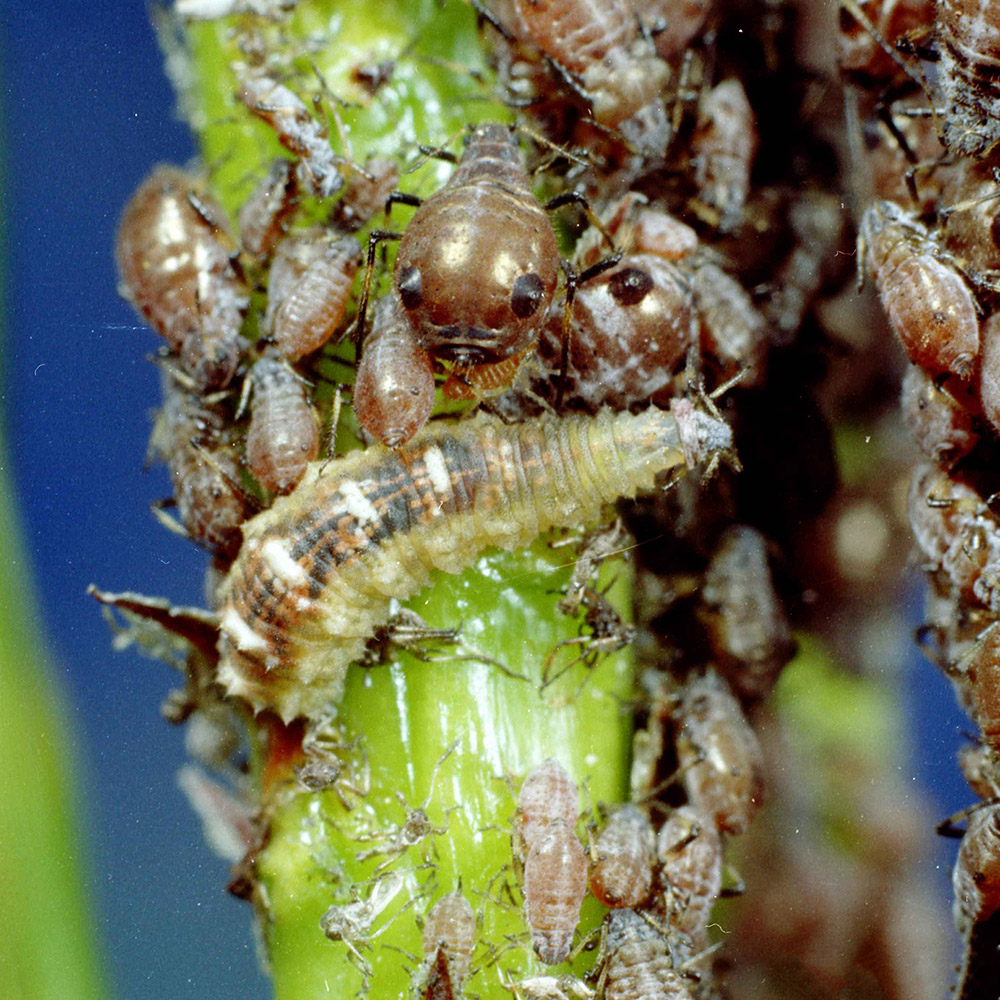
Control measures
- Control measures are needed only when 25% or more of leaf flushes are infested and when the presence of beneficial insects on infested shoots is less than 25%.
- Appropriate actions include spraying young growth with a specific aphicide.
- Check the APVMA PubCRIS database for registered controls.
Always read the label
Users of agricultural (or veterinary) chemical products must always read the label and any Permit before using the product, and strictly comply with the directions on the label and the conditions of any Permit. Users are not absolved from compliance with the directions on the label or the conditions of the Permit by reason of any statement made or not made in this publication.
Warning
Pesticide residues may occur in animals treated with pesticides, or fed any crop product, including crop waste, that has been sprayed with pesticides.
It is the responsibility of the person applying a pesticide to do all things necessary to avoid spray drift onto adjoining land or waterways.

